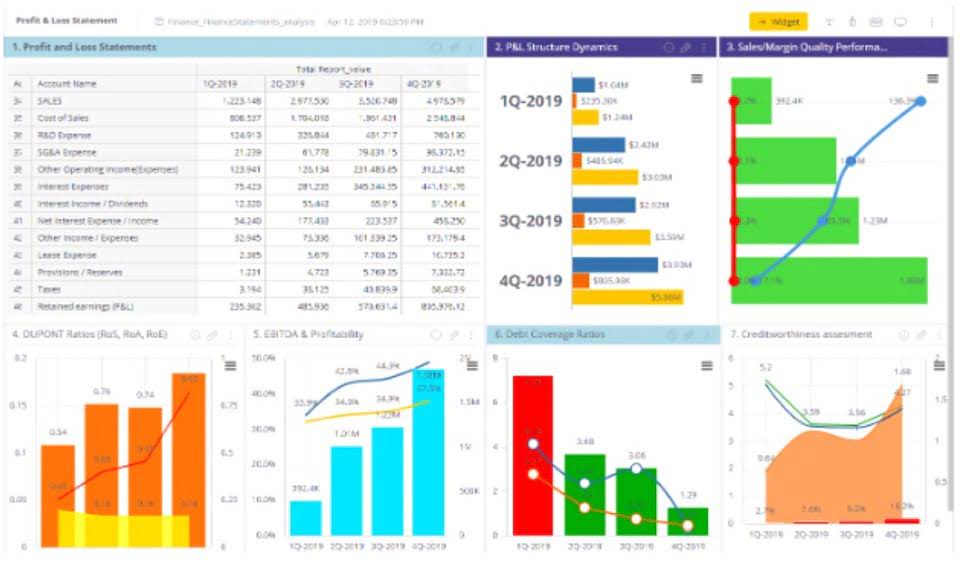Discover how to record security deposits, pay property owner expenses, and more. And if you’re a real estate agent, broker, or flip real estate, you can also take the Real Estate class. Join our team of instructors as they cover everything you need to know when you make the switch from QuickBooks Desktop to QuickBooks Online.
- Throughout the course, you’ll learn how to interpret these insights and leverage them to drive strategic initiatives and foster the growth of your enterprise.
- Studying with the QuickBooks expert is one definite way to help you stand out from the crowd and present yourself as an official.
- Whether you’re a bookkeeping beginner or have some experience already, this book will help you learn to use Intuit QuickBooks Online confidently.
- Some companies need to track working time of their employees which can be charged afterwards to a client.
Key Features
So, with this course, Accounting is simplified and made highly comprehensible. We regard it as the best QuickBooks online course as the course is frequently updated at absolutely no cost. So, you will have access to the latest details around QuickBooks, along with newer information, which comes around in the subject.
Whether you’re a bookkeeping beginner or have some experience already, this book will help you learn to use Intuit QuickBooks Online confidently. This new edition has every chapter revised to cover a range of new features and updates available, including smart invoicing and cash flow projections. You’ll learn how to create multilingual invoices, track mileage, work with a cash flow dashboard that helps you with cash forecasting and planning reports, and upload batches of bills and checks. Real-time insights into your business finances are indispensable for making informed decisions. QuickBooks provides a dashboard that offers a snapshot of your financial health, allowing you to assess the performance of your business at a glance.
Create Many Important Reports
Marjorie continues to be a thought leader around the topic of distributed workforces and remote collaboration. Get personalized course recommendations, track subjects and courses with reminders, and more. Class Central aggregates courses from many providers to help you find the best courses on almost any subject, wherever they exist.
We scoured through the different QuickBooks courses and have shortlisted the nine best ones. So, if You are thinking of working with the online software, or You are a bookkeeper or accountant and will be using this for clients or even You run your own business and want to know how to use Quickbooks for yourself. Some companies need to track working time of their employees which can be charged afterwards to a client.
You will benefit most from this course if you want to accomplish basic accounting tasks to manage income and expenses using QuickBooks Online. Our instructional design ensures that the course is accessible, engaging, and paced to accommodate various learning styles. Interactive modules, real-world scenarios, and assessments provide a well-rounded learning journey, allowing you to apply your knowledge confidently. Acquire the skills to navigate the financial landscape with confidence, efficiency, and accuracy. All our courses offer 12 months access and are designed to be studied at your own pace so you can take as much or as little time as you need to complete and gain the full CPD accredited qualification. The book is for small business owners, bookkeepers, and accounting students who want to learn QuickBooks Online and understand how to implement it effectively.
Complete the course and order your accredited certificate to showcase your achievement. Furthermore, you can check the validity of your qualification and verify your certification on our website at anytime. This valuable course is suitable for anyone interested in working in this sector or who simply wants to learn more about the topic. If you’re an individual looking to excel within this field then Mastering QuickBooks Online Course Level 2 is for you.
Sign in to Alpha Academy
You already have the basic level, but before we start with Level 2 we need to make sure you still remember the basics. So, why not improve your chances of gaining professional skills and better earning potential. We pride ourselves on having friendly and experienced instructors who provide full weekday support and are ready to help with any of your queries.
We’ll guide you through the software’s functionalities, providing hands-on experience to ensure you can navigate and leverage its features effectively. From automating routine transactions to generating real-time financial reports, you’ll learn how QuickBooks can be a game-changer for your business or career. With these classes, you can learn everything from accounts payable and receivable to depreciation and payroll, inventory, and reporting. QuickBooks training can equip you with the skills and knowledge needed to effectively use the software for personal or business financial management. It can also enhance your resume and open up job opportunities in fields that require knowledge of QuickBooks.
Mastering QuickBooks® 2025: Bookkeeping for small businesses with US QuickBooks® Online 6th ed. Edition
QuickBooks Certified User (QBCU) certification is an industry-recognized credential that effectively validates one’s skills using Intuit QuickBooks accounting software. QuickBooks Certified User exams are offered for QuickBooks Online for candidates to demonstrate their skills in the latest quickbooks courses online version of QuickBooks Online. He has a PhD and has experience teaching tax and accountancy at graduate level. Alongside publishing articles on accounting software, FitSmallBusiness has its own courses on how to get the most out of QuickBooks.
How to scale a business: 4 signs youre ready + 7 tips for scaling effectively
- Also, when you have to order more of your products, you need to create e Purchase Order.
- Learn how to set up and customize QuickBooks, record transactions, generate reports, and troubleshoot common issues.
- This efficiency not only boosts productivity but also enhances your ability to respond promptly to the dynamic needs of your business.
- The University of Southern Idaho offers an Introduction To QuickBooks Online on the CSI Workforce platform.
- QuickBooks is the cornerstone of efficient financial management, and this course is your gateway to mastering this platform used by 7 million small businesses today.
QuickBooks Online QuickStart AND QuickBooks Online Advanced These are live, hands-on classes specifically mastering quickbooks level 2 for the Online version of QuickBooks. Small business owners, bookkeepers, and accounting students who want to start using QuickBooks more effectively will all get plenty of practical know-how from this book. Throughout the book, you’ll be guided by an experienced Certified Public Accountant and Advanced Certified QuickBooks ProAdvisor – from setup to core features and beyond. Live and on-demand classes, plus 1-on 1 help with your books via Zoom whenever you need it.
QuickBooks Online -Bookkeeping Business-Easy Way
QuickBooks by Intuit is a widely used accounting software that caters to individuals and businesses of all sizes for effective financial management. Learn how to keep the books for the Healthcare and Assisted Living industries using QuickBooks. Record income and patients, receive payments, organize and set up lists, record adjustments and additional patient transactions, record costs, track classes, and use payroll. It does not assume that you’ve used a different version of QuickBooks or another accounting program before… Updated for the latest QuickBooks 2025, this book introduces advanced topics like time tracking for hourly billing, inventory management techniques, and real-time financial reporting. Detailed guidance on payroll processing and 1099 contractor tracking is also included to help manage your financial operations.
It is an excellent QuickBooks online course, designed and taught by a CPA who has over a decade-long software experience. All of this comes at no added cost with this QuickBooks online training program. So, once you have paid the course fee, you will get access to future updates from the instructor. However, if you want to learn how to use QuickBooks as well as other accounting software, a subscription to a platform might be a better option. Getting the hang of accounting software sounds difficult, but don’t fret – we’re going to dig into the best way to learn how to use QuickBooks. I’ve looked at all the options available and chosen the ten best QuickBooks courses.
Throughout the course, you’ll learn how to interpret these insights and leverage them to drive strategic initiatives and foster the growth of your enterprise. Sometimes, a customers just want to know what it will cost if he buys a product at your company. Also, when you have to order more of your products, you need to create e Purchase Order. The course assumes you know how to use a computer, and that you’re familiar with accessing and navigating web sites. It does not assume that you’ve used a different version of QuickBooks or another accounting program before.










